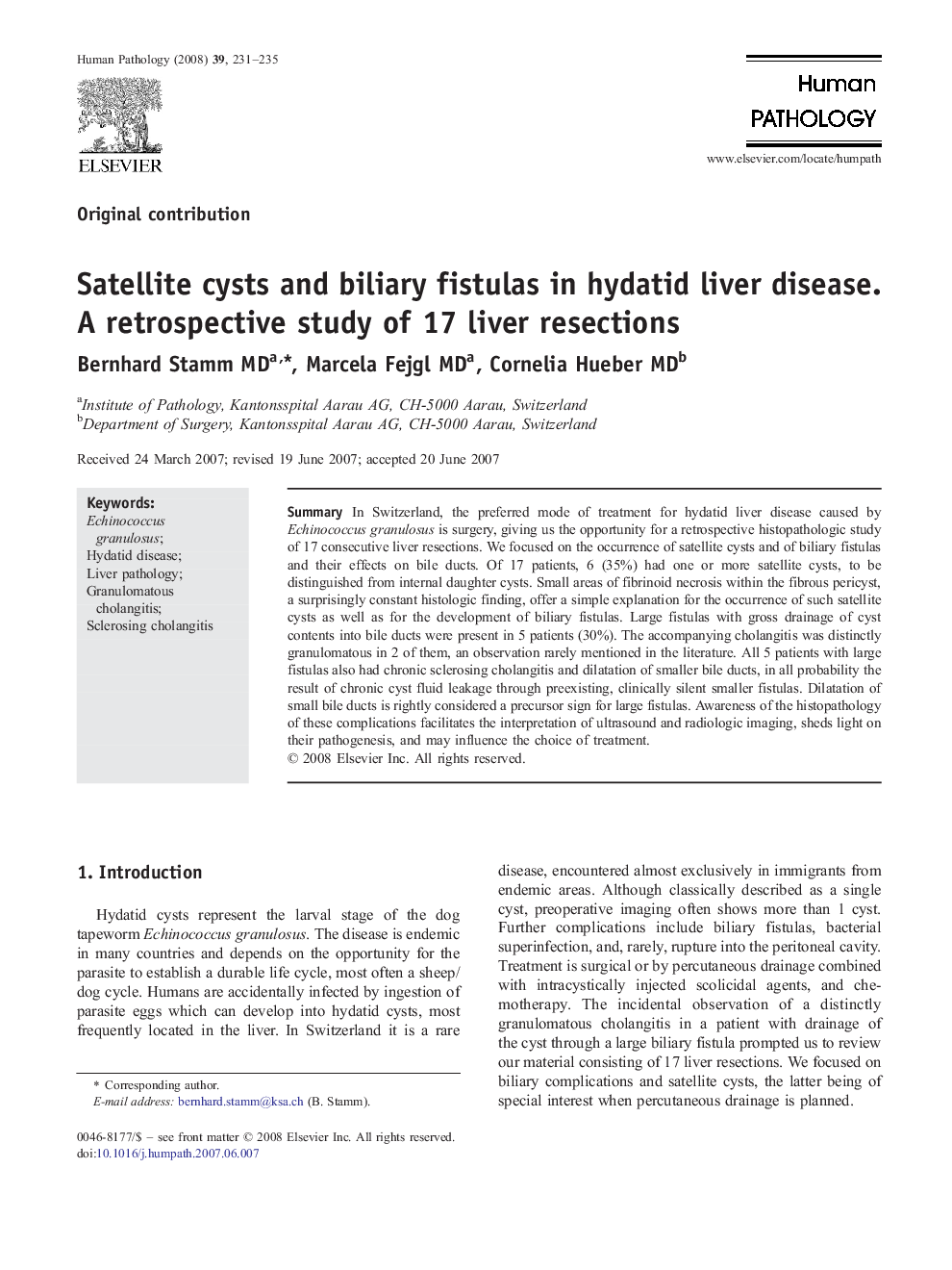| Article ID | Journal | Published Year | Pages | File Type |
|---|---|---|---|---|
| 4135193 | Human Pathology | 2008 | 5 Pages |
SummaryIn Switzerland, the preferred mode of treatment for hydatid liver disease caused by Echinococcus granulosus is surgery, giving us the opportunity for a retrospective histopathologic study of 17 consecutive liver resections. We focused on the occurrence of satellite cysts and of biliary fistulas and their effects on bile ducts. Of 17 patients, 6 (35%) had one or more satellite cysts, to be distinguished from internal daughter cysts. Small areas of fibrinoid necrosis within the fibrous pericyst, a surprisingly constant histologic finding, offer a simple explanation for the occurrence of such satellite cysts as well as for the development of biliary fistulas. Large fistulas with gross drainage of cyst contents into bile ducts were present in 5 patients (30%). The accompanying cholangitis was distinctly granulomatous in 2 of them, an observation rarely mentioned in the literature. All 5 patients with large fistulas also had chronic sclerosing cholangitis and dilatation of smaller bile ducts, in all probability the result of chronic cyst fluid leakage through preexisting, clinically silent smaller fistulas. Dilatation of small bile ducts is rightly considered a precursor sign for large fistulas. Awareness of the histopathology of these complications facilitates the interpretation of ultrasound and radiologic imaging, sheds light on their pathogenesis, and may influence the choice of treatment.
